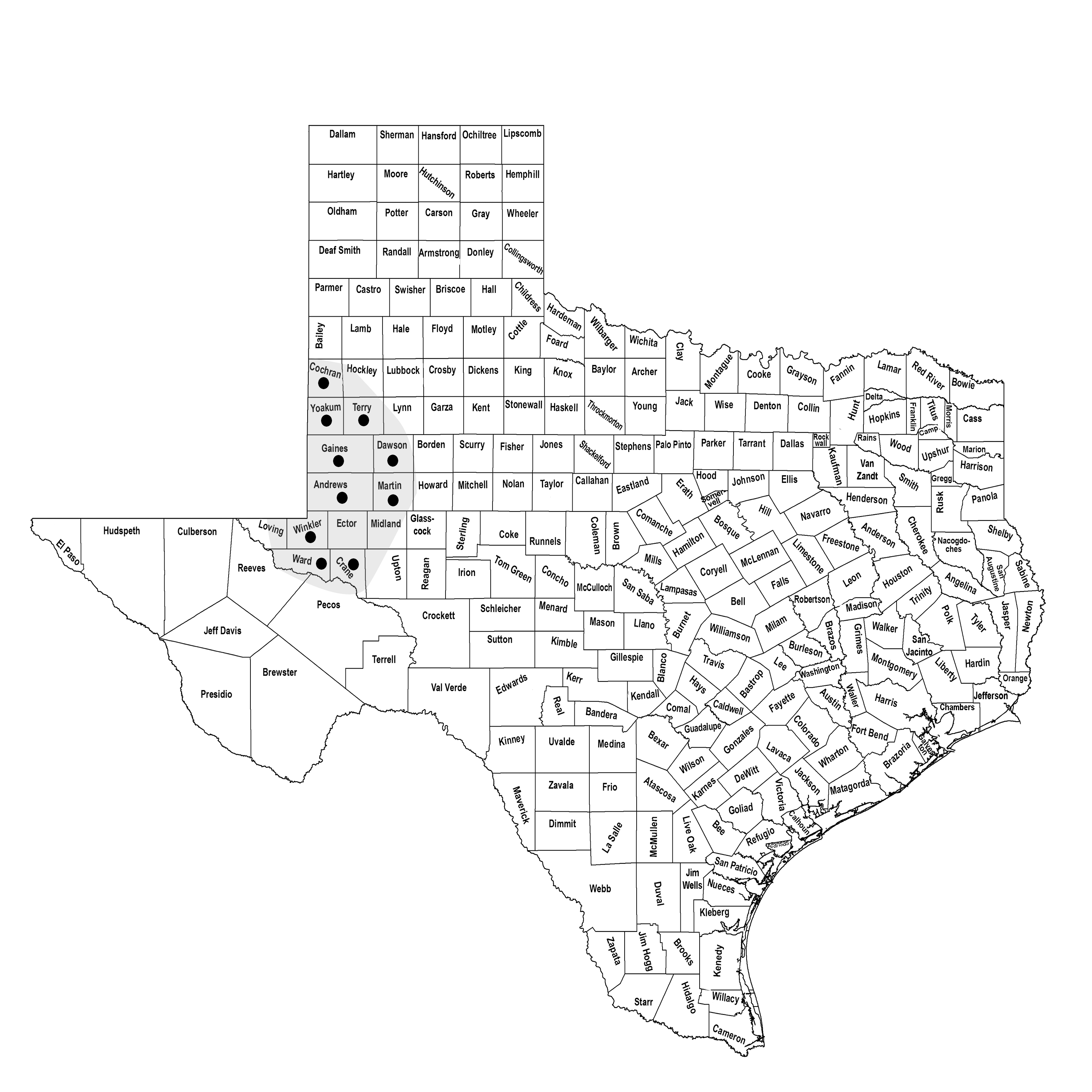JONES'S POCKET GOPHER
Geomys knoxjonesi Baker and Genoways 1975
Order Rodentia : Geomyidae
DESCRIPTION. This is a cryptic species of the plains pocket gopher, formerly considered a subspecies of G. bursarius (see "Remarks"). Morphologically, Jones's pocket gopher appears to be slightly smaller, both externally and cranially, than the plains pocket gopher, but careful study of genetic characters is required before the two may be distinguished. Coloration is buff brown dorsally, somewhat paler on the sides and ventrally, with white feet. Dental formula: I 1/1, C 0/0, Pm 1/1, M 3/3 × 2 = 20.

DISTRIBUTION. Southwestern plains of Texas and southeastern plains of New Mexico. In Texas, known from Cochran, Yoakum, Terry, Gaines, Dawson, Andrews, Martin, Winkler, Ward, and Crane counties at sites of deep sandy soils of aeolian origin. Geomys knoxjonesi has been found in sympatry with Cratogeomys castanops near Brownfield in Terry County.

SUBSPECIES. Monotypic species.
HABITS. The habits of G. knoxjonesi are similar to G. bursarius. Pregnant females have been recorded in January from Terry County, in March from Cochran and Yoakum counties, and in July from Andrews County. Average number of fetuses in seven pregnancies was 2.1 (range 1–3). Although genetic evidence for hybridization with G. bursarius has been found, the apparent zone of contact between the two species is extremely narrow, and the resultant hybrid offspring are sterile or have a lower level of fertility, indicating that the two species rarely interact reproductively.
POPULATION STATUS. Common to uncommon. Jones's pocket gopher appears to be locally common throughout most of its range; however, it is being replaced by the yellow-faced pocket gopher (Cratogeomys castanops) in portions of its range.
CONSERVATION STATUS. The IUCN lists Jones's pocket gopher as a species of least concern, and it does not appear on the federal or state lists of concerned species. This species may warrant monitoring in the near future.
REMARKS. Originally recognized as a subspecies of G. bursarius, in 1987 genetic analyses by Robert Baker (Texas Tech University) and his students indicated that Jones's pocket gopher is essentially reproductively isolated from G. bursarius and therefore should be recognized as a separate species. There has been some debate concerning its distinctness from G. arenarius. However, molecular studies of Phil Sudman (Tarleton State University) and Ted Jolley, Ryan Chambers, and RDB (Texas Tech University), as well as others, have demonstrated the validity of treating G. knoxjonesi as a species.
At Brownfield, Texas, G. knoxjonesi has co-occurred with Cratogeomys castanops for at least 30 years. However, recent attempts to collect G. knoxjonesi at this locality have proven futile. It may that C. castanops is replacing G. knoxjonesi where the two species co-occur.
From The Mammals of Texas, Seventh Edition by David J. Schmidly and Robert D. Bradley, copyright © 1994, 2004, 2016. Courtesy of the University of Texas Press.
Natural Science Research Laboratory
-
Address
Museum of Texas Tech University, 3301 4th street, Lubbock, TX 79409 -
Phone
806.742.2486 -
Email
nsrl.museum@ttu.edu

